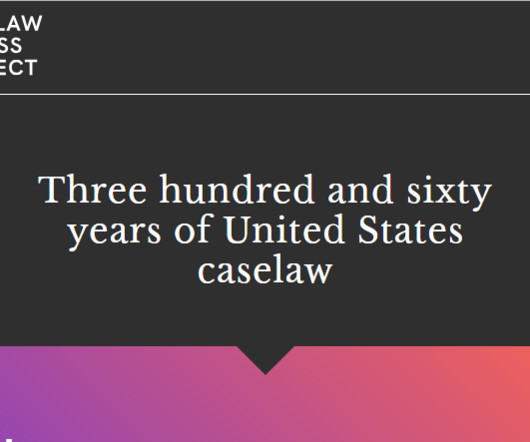Guest Post: The Caselaw Access Project — Then, Now, Tomorrow
Law Sites
MARCH 18, 2024
the morning of a critical meeting at Harvard Law School, where I worked. Harvard professor Jonathan Zittrain and l were sitting down with Daniel Lewis and Nik Reed , the founders of a legal research startup named Ravel Law, along with lawyers from Harvard’s Office of General Counsel, Debevoise & Plimpton and Gundersen Dettmer.












Let's personalize your content